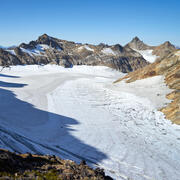Climate Change
The National Climate Change Viewer
Variability in the Earth's climate system affects the location and health of terrestrial and marine ecosystems; the distribution, quantity, and quality of water resources; and the sustainability of human societies. The Climate R&D Program applies geological, geochemical, ecological, and other analyses to document rates, amplitudes, causes, and impacts of climate change through Earth’












